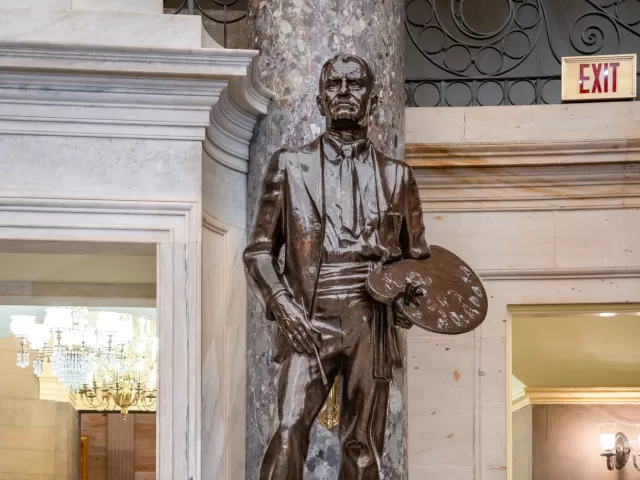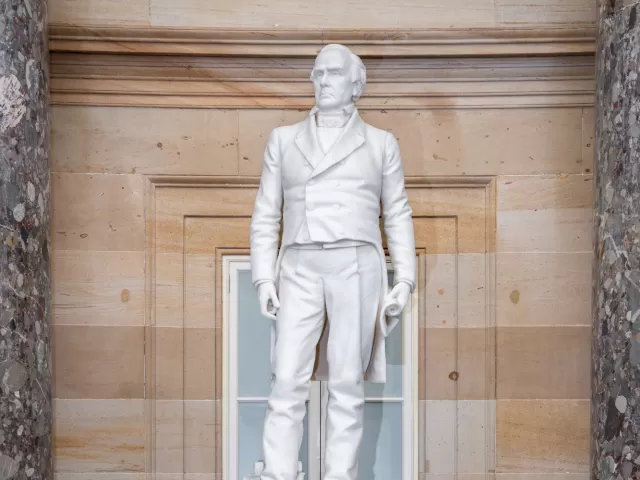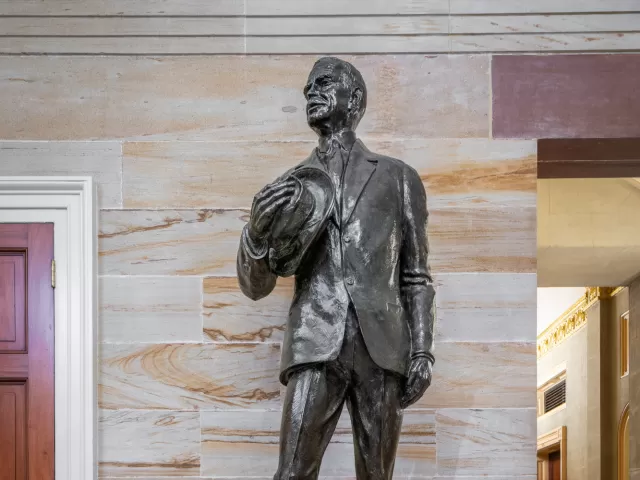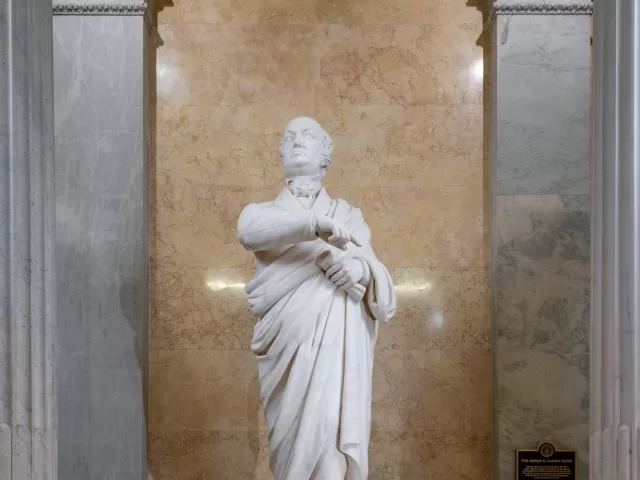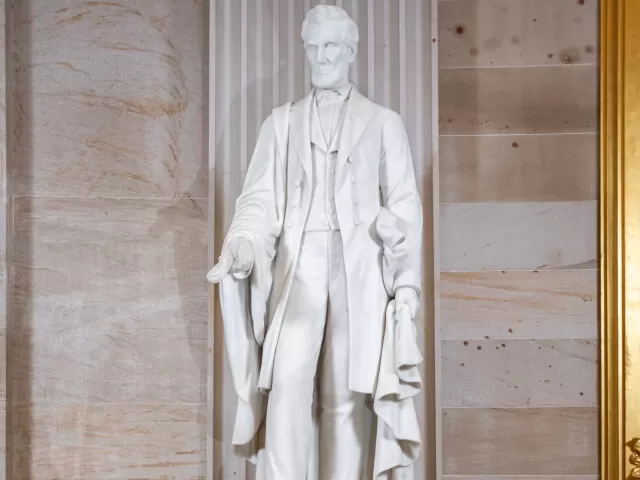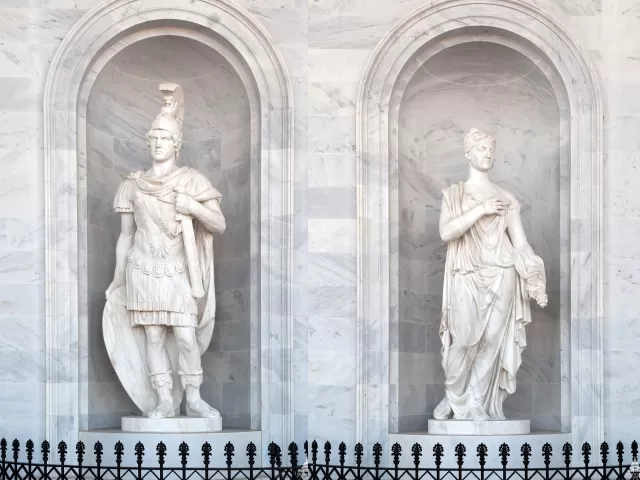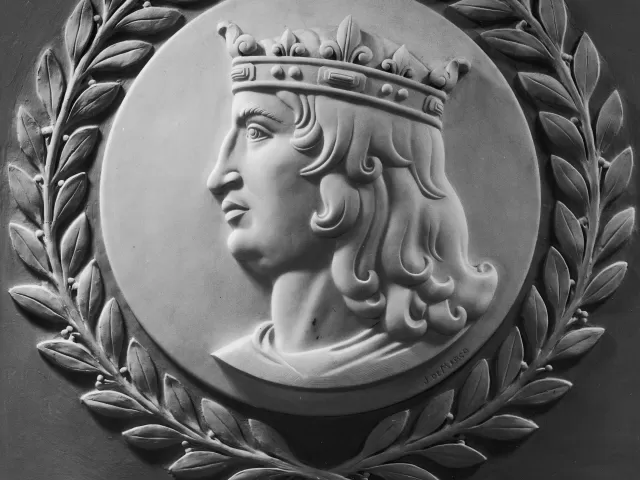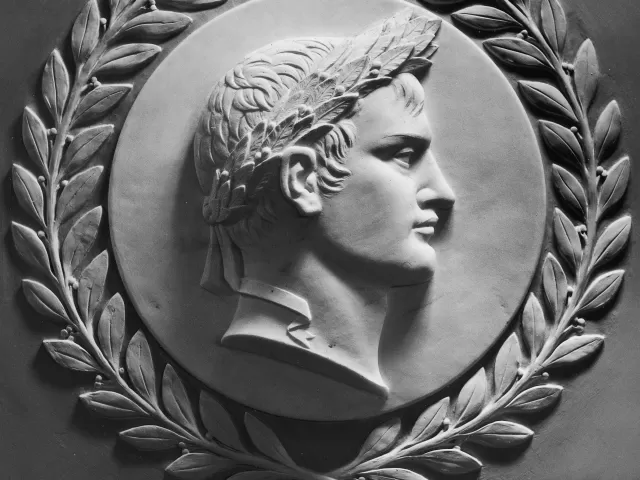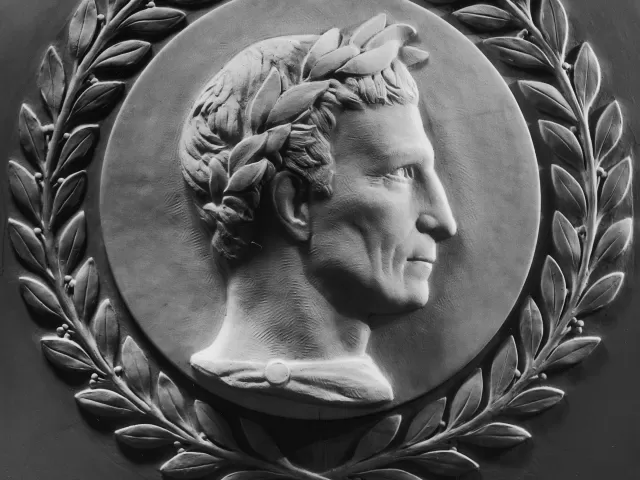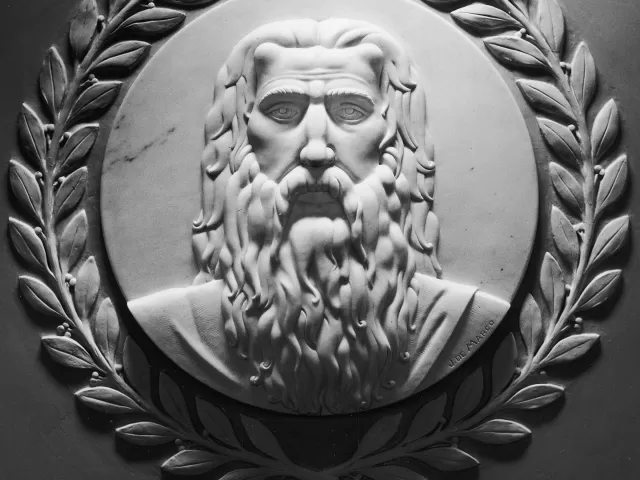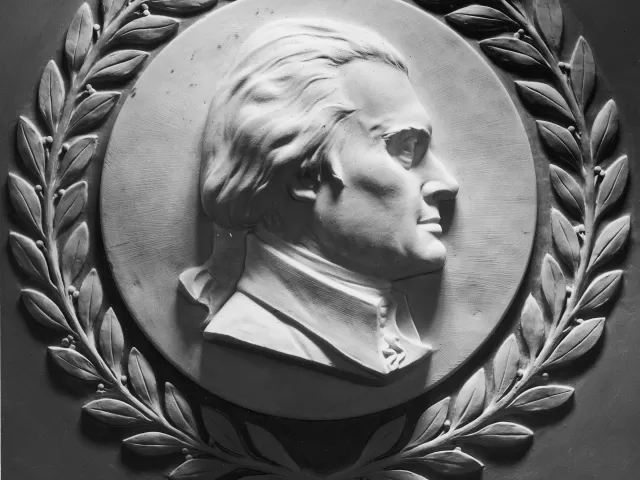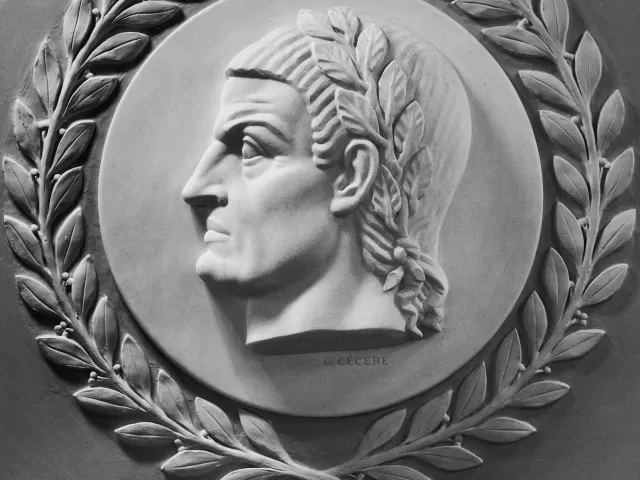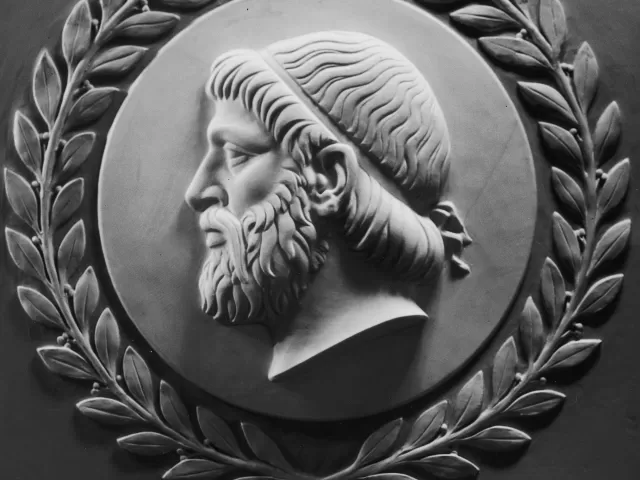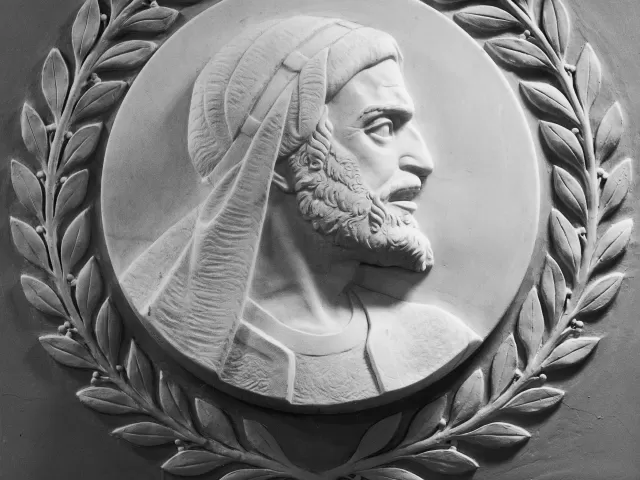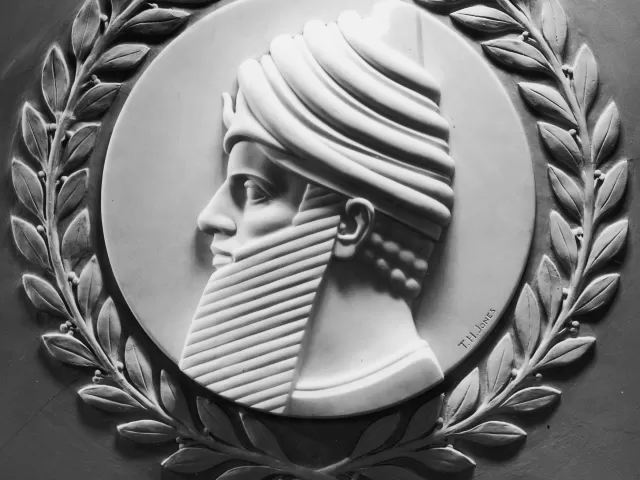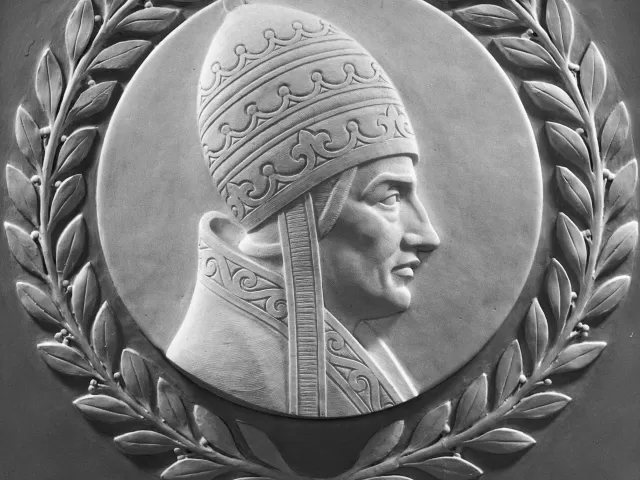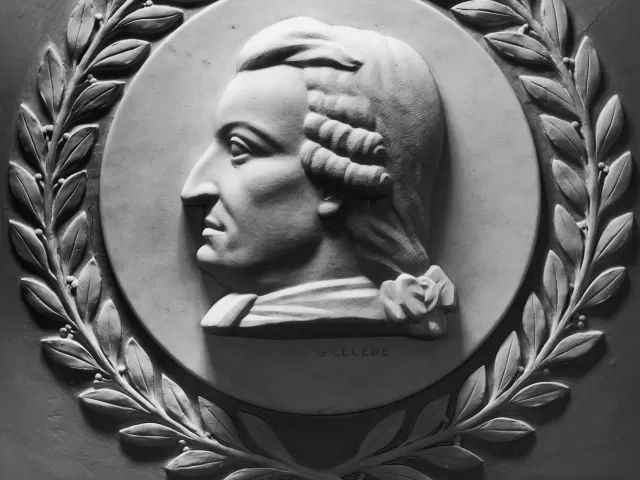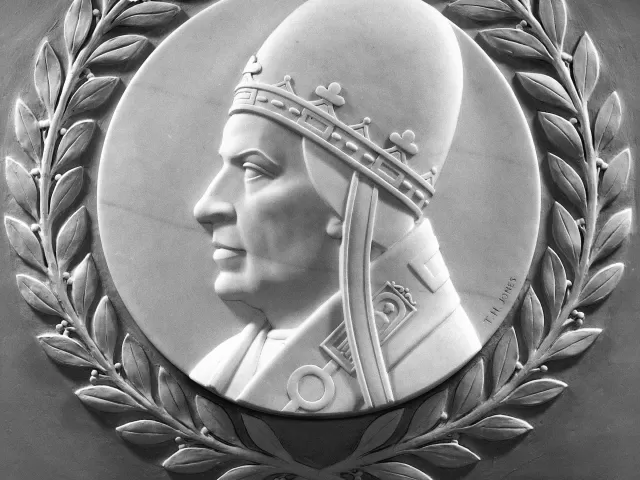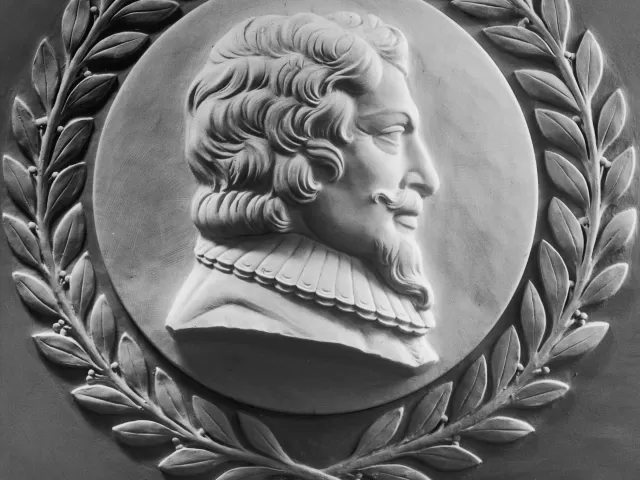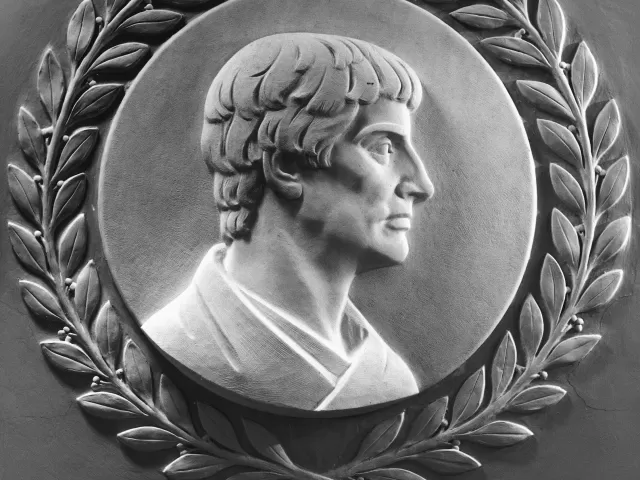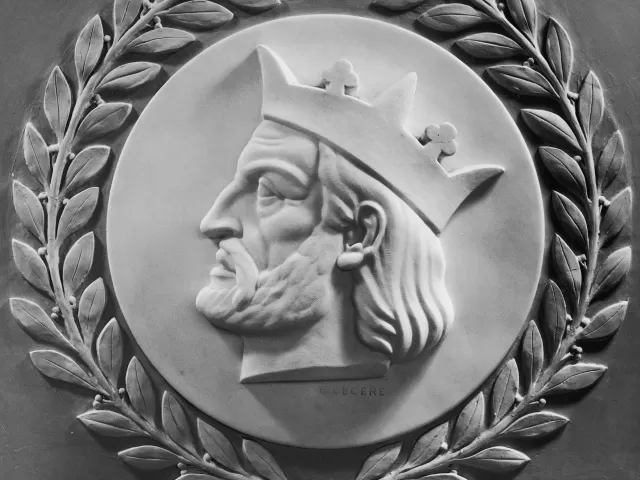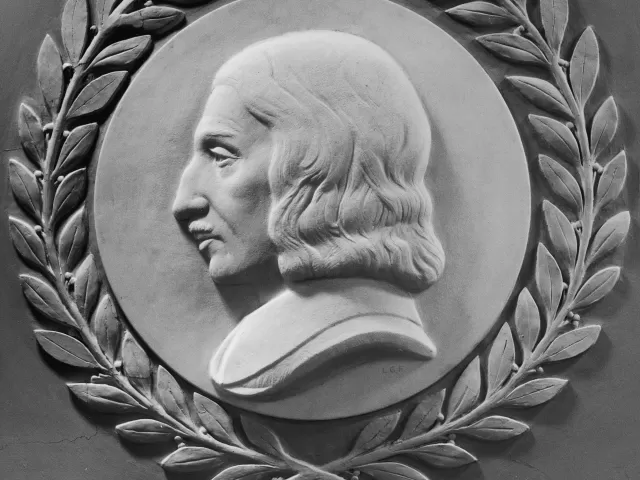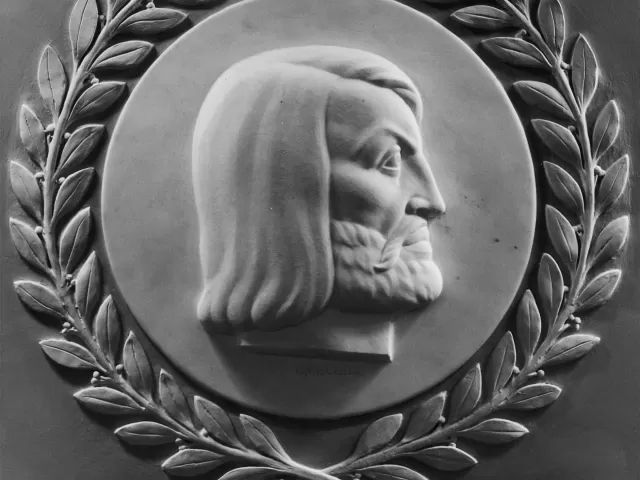Displaying 391 - 420 of 470 Clear
Highlight
This statue of Charles Marion Russell was given to the National Statuary Hall Collection by Montana in 1959.
Highlight
This statue of Crawford W. Long was given to the National Statuary Hall Collection by Georgia in 1926.
Highlight
This statue of Daniel Webster was given to the National Statuary Hall Collection by New Hampshire in 1894.
Highlight
This statue of Dennis Chavez was given to the National Statuary Hall Collection by New Mexico in 1966.
Highlight
This statue of Dwight Eisenhower was given to the National Statuary Hall Collection by Kansas in 2003. His statue replaced that of George W. Glick and marked the first time that a state had replaced one of its statues.
Highlight
Alexander Hamilton is best known as an American Revolutionary-era author, delegate to the Constitutional Convention, and first Secretary of the U.S. Treasury. This statue features representations of the Federalist Papers, the constitution, and the inauguration of George Washington.
Highlight
The statue of Edward Dickinson Baker depicts him as a legislator. It features a plumed military hat resting on a book, which sits upon a sword symbolic of his military service.
Highlight
The statue of President Abraham Lincoln depicts him with a serious, contemplative expression. Sculpted by the first female artist commissioned to create a work of art for the United States government.
Highlight
Marble allegorical statues "War" and "Peace" flank the East Central Front entrance to the U.S. Capitol. Plaster models may be seen in the vestibule area outside the east door of the U.S. Capitol Rotunda.
Highlight
Statue of Freedom is the crowning feature of the United States Capitol Dome. The bronze statue stands 19 feet 6 inches tall.
Highlight
The statue of Thomas Jefferson was the first full-length portrait statue placed in the U.S Capitol Building. Its bronze medium was unusual in early 19th-century America, where sculpture was more commonly carved in marble.
Highlight
This statue depicts American general and president Ulysses S. Grant in the uniform of the Union army. On his shoulders are four stars denoting him as "General of the Army of the United States," a rank that he was the first to hold.
Highlight
Saint Louis (1214-1270) King Louis IX of France. Author of the Mise of Amiens, a judgment on a dispute between Henry III and rebellious English barons.
Highlight
Napoleon I (1769-1821) Emperor of France. Appointed a commission to draw up the Code Civil, a combination of tradition and Roman law that influenced the legal systems of European and American states during the 19th century.
Highlight
Papinian (c. 146-212) Roman jurist. Author of fifty-six books about legal questions and decisions, extracts from which were influential in the development of the Justinian Code.
Highlight
Robert Joseph Pothier (1699-1772) French jurist; author of the Digest of Pandects of Justinian, a classic study of Roman law; author of several treatises on French law, which were incorporated in the French Code Civil.
Highlight
Moses (c. 1350-1250 B.C.) Hebrew prophet and lawgiver. Transformed a wandering people into a nation; received the Ten Commandments.
Highlight
Thomas Jefferson (1743-1826) Third President of the United States. Wrote the Declaration of Independence and the Statute of Virginia for Religious Freedom.
Highlight
Justinian I (c. 483-565) Byzantine emperor. Appointed Tribonian to compile and consolidate the Roman legal code into the Justinian Code, which he supplemented with a collection of rulings and precedents.
Highlight
Lycurgus (c. 900 B.C.) Semimythical Greek legislator. Traditional author of laws and institution of Sparta.
Highlight
Maimonides (1135-1204) Jewish philosopher of Cordova, Spain. Compiled a systematic exposition of the whole of Jewish law as contained in the Pentateuch and in Talmudic literature.
Highlight
Hammurabi (fl. c. 1792-1750 B.C.) King of Babylonia. Author of the Code of Hammurabi, which is recognized in legal literature as one of the earliest surviving legal codes.
Highlight
Innocent III (1161-1216) Medieval pope. Student of canon and civil law, who, like Gregory IX, preserved the remnants of Roman law during the Dark Ages.
Highlight
George Mason (1726-1792) American political leader. Drafted the Virginia Constitution and Declaration of Rights in 1776; was a member of the constitutional convention of 1787; led opposition to the ratification of the Constitution until the Bill of Rights was added.
Highlight
Gregory IX (c. 1147-1241) Medieval pope. Author of a compilation of decretals (i.e., authoritative decisions) on canon law; during a critical period he was instrumental in maintaining the remnants of Roman law.
Highlight
Hugo Grotius (1583-1645) Dutch statesman. Advocate-General of Holland and Zeeland; author of On the Law of War and Peace, the first treatise on international law.
Highlight
Gaius (c. 110-180) Roman jurist. Author of numerous works, the most noted being the Institutes, a complete exposition of the elements of Roman law that were the foundation of Roman civil law.
Highlight
Alfonso X, the "Wise" (1221-1284) King of Le'acute and Castile. Author of the Royal Code, a compilation of local legislation for general use. Originator of The Seven Parts, the code used as a basis for Spanish jurisprudence.
Highlight
Jean Baptiste Colbert (1619-1683) French finance minister and controller general under Louis XIV. Codified commercial, maritime, and colonial ordinances; reformed the French legal system.
Highlight
Simon de Montfort (1200-1265) English statesman. Advocated representative government; established an early form of representative government in England.
